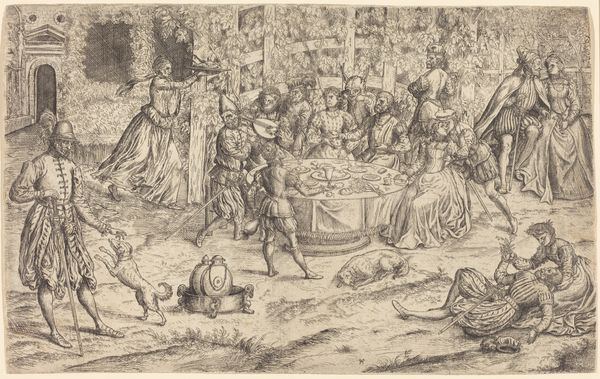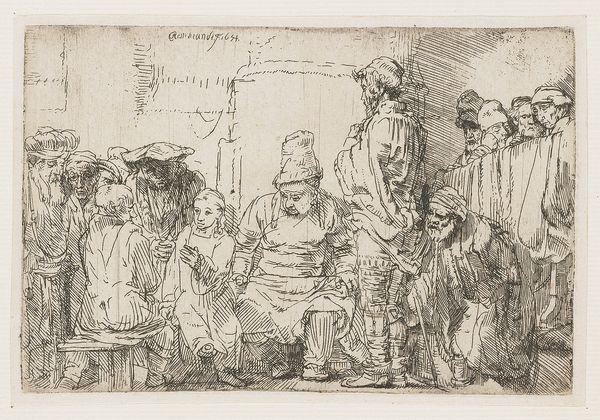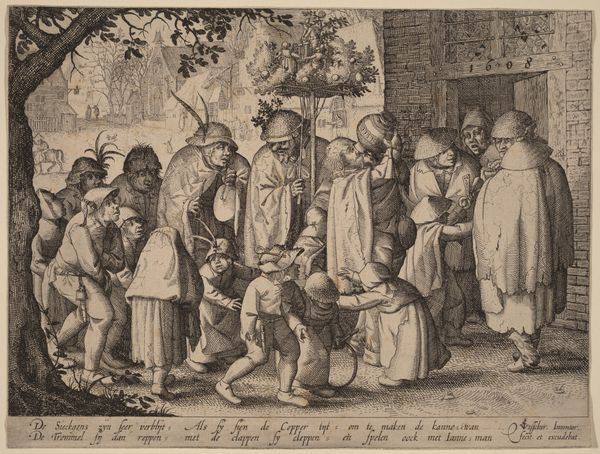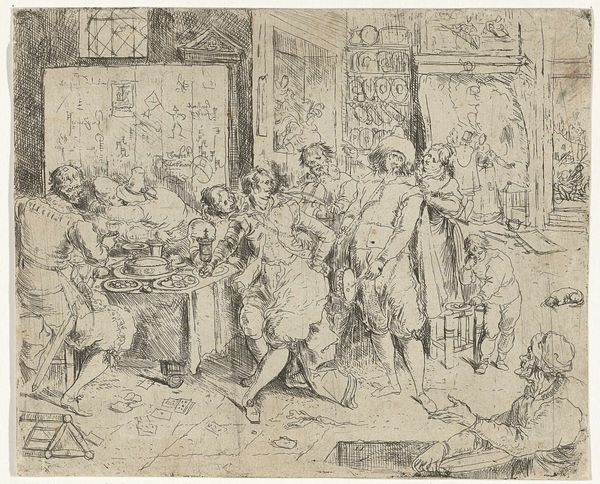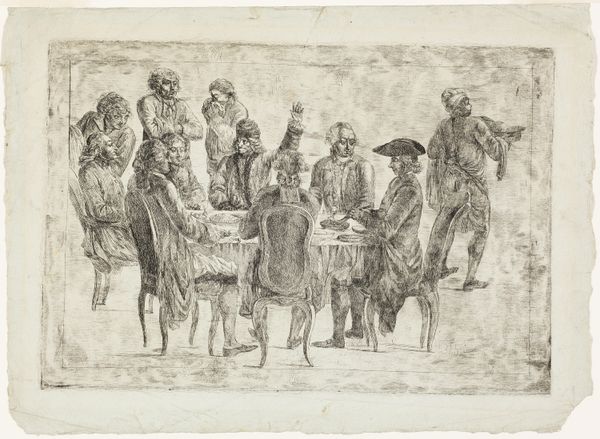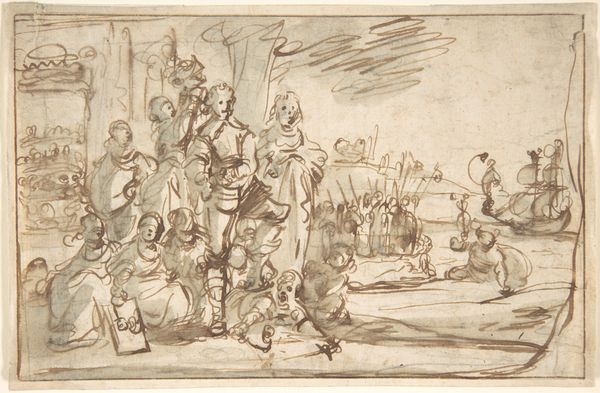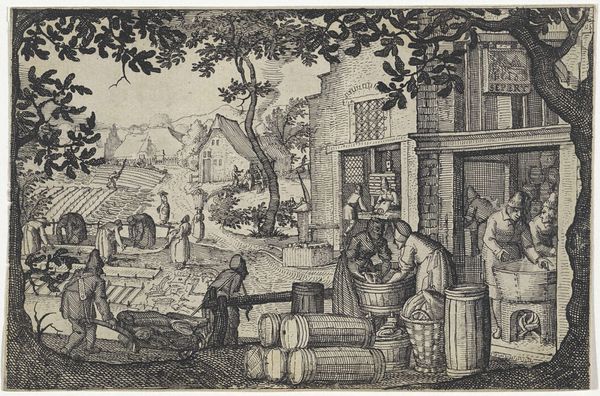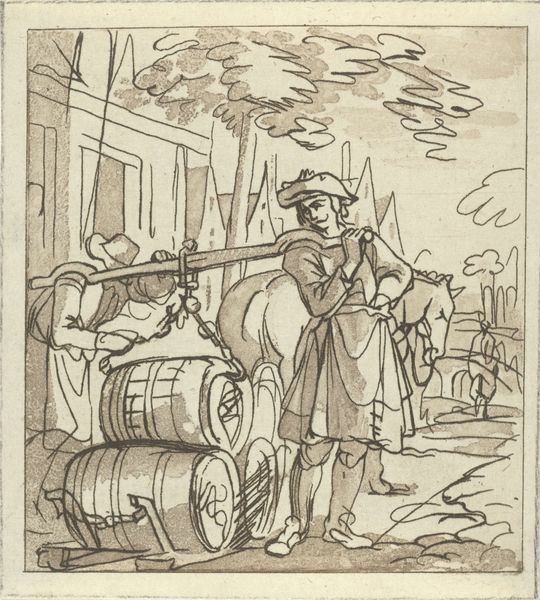
drawing, paper, ink
#
drawing
#
dutch-golden-age
#
figuration
#
paper
#
ink
#
line
#
genre-painting
#
realism
Dimensions: height 119 mm, width 165 mm
Copyright: Rijks Museum: Open Domain
Claes Jansz Visscher rendered this market scene with pen and brown ink. The conical hats worn by the merchants are the most striking motif, a sartorial symbol of the burgeoning merchant class in 17th-century Netherlands. These hats echo the Phrygian caps worn during the Roman era, themselves symbols of freedom and revolution. In Visscher's time, the hats signify not just liberty but also economic power and social mobility. Notice how the figures wearing these hats dominate the composition, their forms interweaving through every section of the image. Consider also the buckets and baskets overflowing with goods, these shapes and structures transcend their utilitarian purpose, becoming emblematic of abundance and trade. The act of exchanging goods touches deep-seated human desires and fears related to security and provision. The way the bucket and basket motif appears in ancient Egyptian art, or even in medieval tapestries, reveals a continuous thread of how societies represent prosperity. It’s not a linear story but a cyclical return of symbols, reinvented and reinterpreted across epochs.
Comments
No comments
Be the first to comment and join the conversation on the ultimate creative platform.
